April 20, 2020 | Celeste Schexnaydre BFA, MA, ATR-BC
As someone who lives with a compromised immune system, I have been inside for at least a week longer than the general public. I moved my art therapy private practice inside my home and onto a HIPAA compliant platform immediately after having a cough and wanting to protect my clients as well as myself. This wasn’t a surprise to many of them as some are aware of my health concerns. I have had to re-imagine my career frequently due to these health limitations. As I look back, I recognize that much of my life has been a dress rehearsal for this episode of quarantine, social distancing and a sudden alteration to my art therapy practice. I imagine that most of you can relate in some way. For some of you, maybe even your path to becoming an art therapist prepared you. As art therapists, we recognize the path is one of a pioneer and trailblazer, a different drummer perhaps. But one thing is for sure: it is a path that presents misconception and requires persistence and resilience.
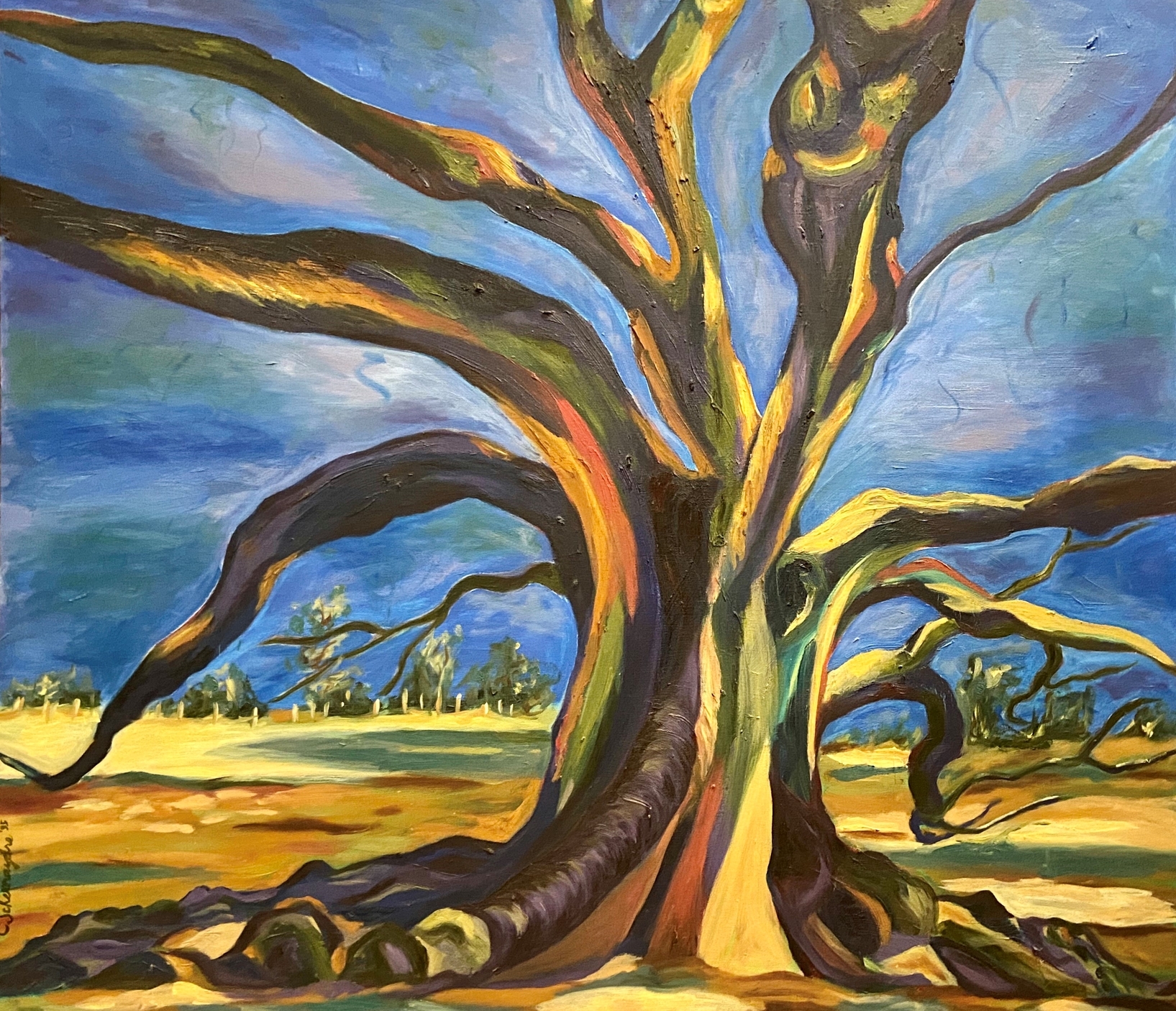
“Oak Tree,” oil painting. This tree represents my reaching out in many directions as well as my vulnerability and strength. Oak trees do not shed all their leaves in the winter.
Building resilience
My story begins as a typical 16-year old finishing up my sophomore year in high school. I had just secured my first job as a lifeguard at a local community country club in Metairie, a suburb of New Orleans. I was raised swimming and water skiing on Lake Ponchartrain during the 70’s and 80’s and the pain in my abdomen originally felt like a super bad muscle pull, except that it did not go away. While on a vacation in Cancun Mexico, the pain became so intense that my mother and I flew home early, and I was immediately taken to a nearby local hospital. Writhing on the floor of the Cancun condo, I remember asking her, “Do you think I have cancer?” She replied emphatically, “of course not — don’t say that!” I would remain in the hospital for a month and learn that I did indeed have cancer, non-Hodgkin’s lymphoma, a type with only 30 known surviving cases and extremely rare in childhood.
The surgeon told my parents I had 6 months to live and he presumed by the inflammation of my spleen and internal cavity that it had spread. Several days later after the removal of my spleen, the news of my cancer was delivered to me through my endeared pediatrician. I asked him, “Am I going to die?” and he answered, “We don’t know, but we will do everything we can to treat you.” The positive news was that the cancer had not spread and was contained in my lymph system behind my abdomen. The year was 1981.
Finding art therapy
More than two years later, and after 26 chemotherapy treatments, I would be given the all clear and declared out of remission. During these rollercoaster times of chemo treatments every 3-4 weeks, I would go from low to high, enduring brutal physical side effects and then be buoyed by the love of family, friends, typical high school shenanigans and lots of creativity and art. My parents decided early on that our family would operate as close to normal as possible. However, I would also be told that my ovaries stopped working which had deemed me infertile and that would be a ‘trade-off’ for surviving. I would turn to art to distract and take me into vacations from reality. I would not learn about the career of art therapy until several years later while I was working on my BFA in painting and drawing at Louisiana State University. As soon as I learned about the field, I knew it was my calling. I felt a strong pull to support others in pain and heal others who struggled to express what words could not.

A full 15 years would pass and in that time I would have graduated from California State University Los Angeles with a Masters in Art Therapy and eventually find my way back to New Orleans. There I would meet my husband, a music therapist and musician at the time. My life felt surreal and I was thriving in my career and in love. But yet another experience of joy and pain was just around the corner.
My painful miracle
I would find out I was miraculously pregnant. My doctor cried when he delivered the news that I was 11 weeks pregnant. Three months later, I would be admitted to the ICU in danger of losing my miracle baby. Several doctors would argue over the cause of my circumstance, ultimately deciding that I was in heart failure, learning of an unknown cardiomyopathy (heart damage to the left ventricle), the ultimate outcome of one of the harsh chemo drugs I had been given to save my life.

Drawing of my daughter in utero.
My beautiful daughter would be born at 25 weeks, her tiny 1 lb. 11 oz. body on a ventilator for 29 days. The day she was born was the happiest and worst day of my husband and my life. My ICU room was filled with images I had made for my baby in anticipation. I was flooded with fear of losing her and joy of bringing her home. I struggled to accept that from this moment I would live the rest of my life with a permanent heart condition which would require quarterly visits to the cardiologist. Self-care had new meaning suddenly because I needed to stay alive for my daughter. After the touch and go of the neonatal ICU, Grace would come home. We had to quarantine her for the first year and I had a new journey not only as the mother of a special need’s child but also as a heart patient at the age of 34.
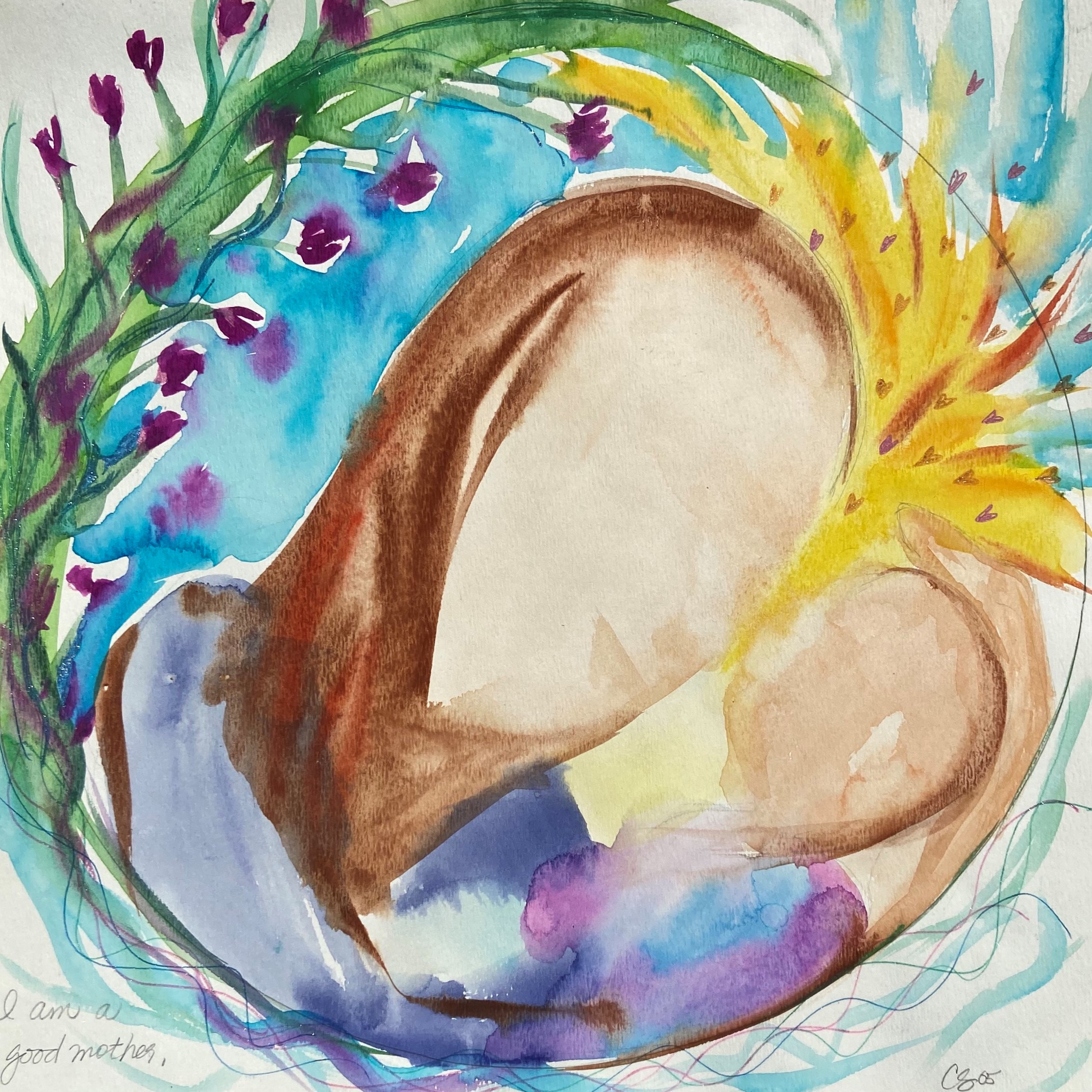
“I am a good mother,” painting of affirmation.
I would face many more obstacles as life moved along – in the span of five years, I would endure breast cancer and two mastectomies, the loss of my home and city in Hurricane Katrina and then the unbelievable task of rebuilding that home after learning it had been rebuilt with toxic Chinese drywall.
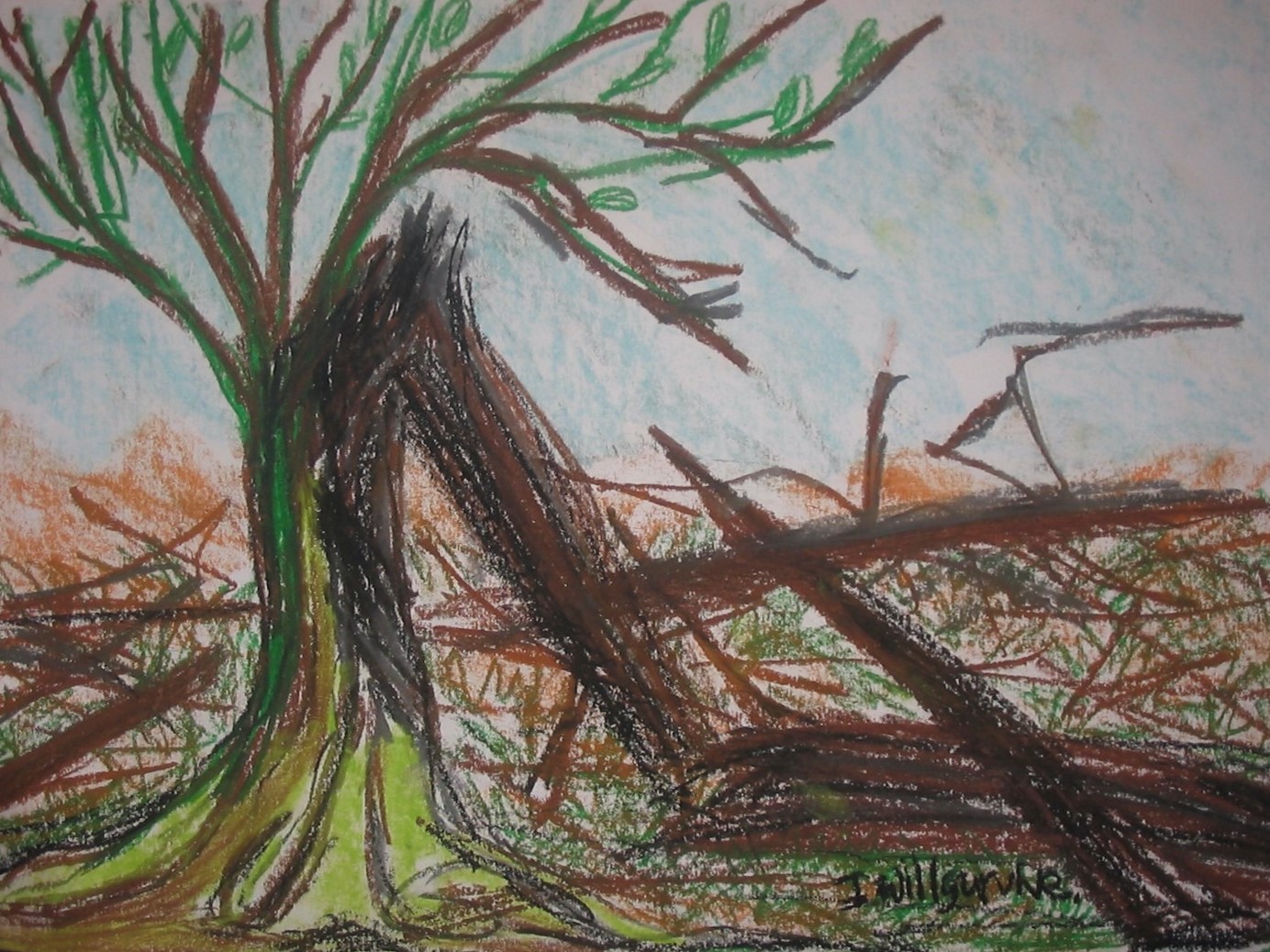
“I will survive,” drawing created after Hurricane Katrina and loss of home.
While we were out of the house for the second rebuild, my daughter Grace would receive a life-altering neurosurgery for her cerebral palsy at St. Louis Children’s Hospital,and at the age of eleven, learn to walk all over again and without the use of a walker. She attended physical therapy five times a week for the next year. Her resilience was abundant but not without frustration; however, she marched on, literally!
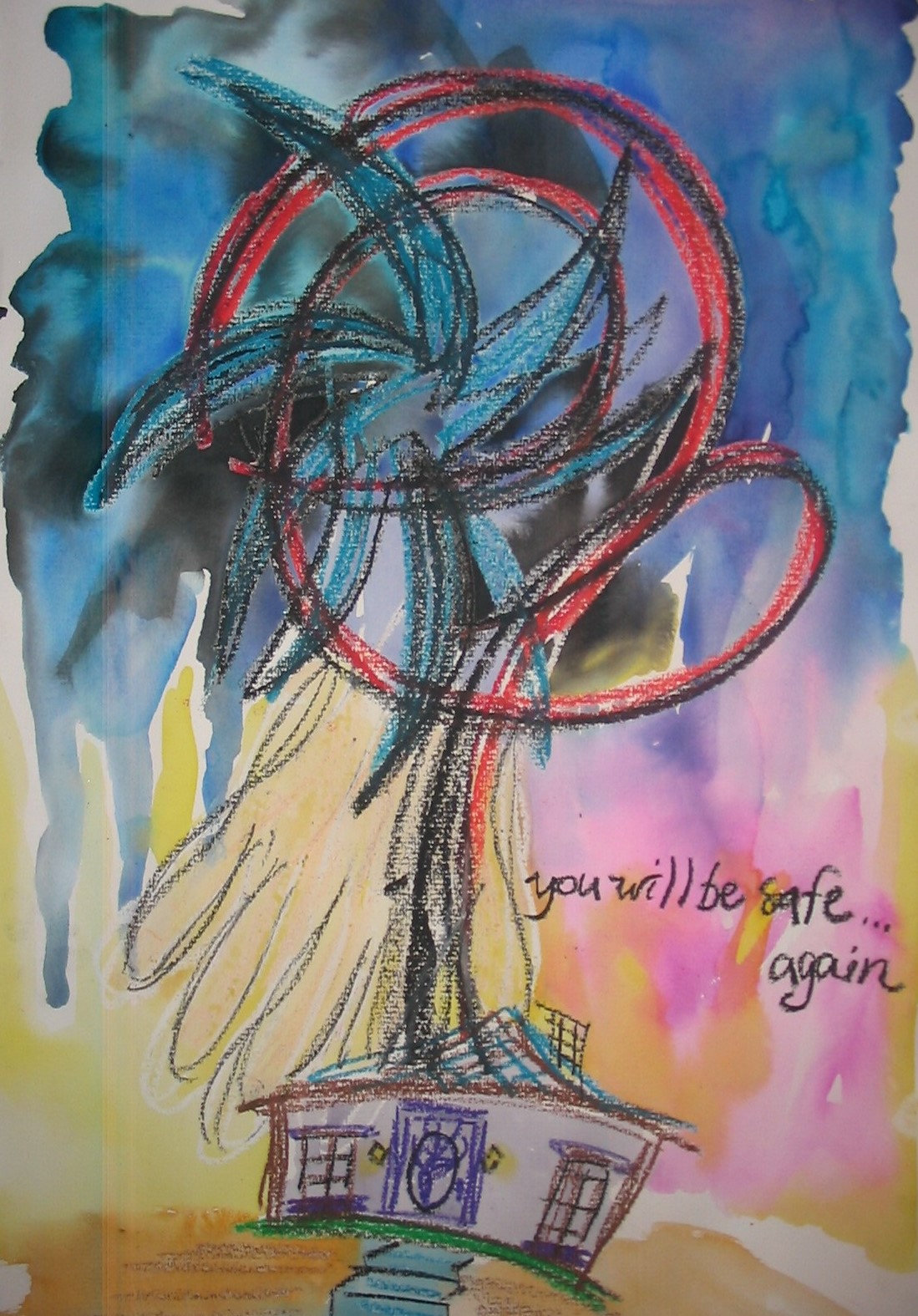
“You will be safe again,” painting of affirmation about the loss of my house and displacement after Hurricane Katrina.
A glimmer of light
Yet in all these terrible hurdles, there was always a glimmer of light and hope that I would end up in a different place. Sometimes, the challenge was just to imagine a glow on the horizon, because it was too dim to see. My art would reflect these experiences of pain, hope and resilience. I would become a stronger and more dutiful art therapist, specializing in children’s grief and survivors of sexual abuse. I never stopped working or left my practice of art therapy. However, it took on different shapes and focuses as did my own art expression.
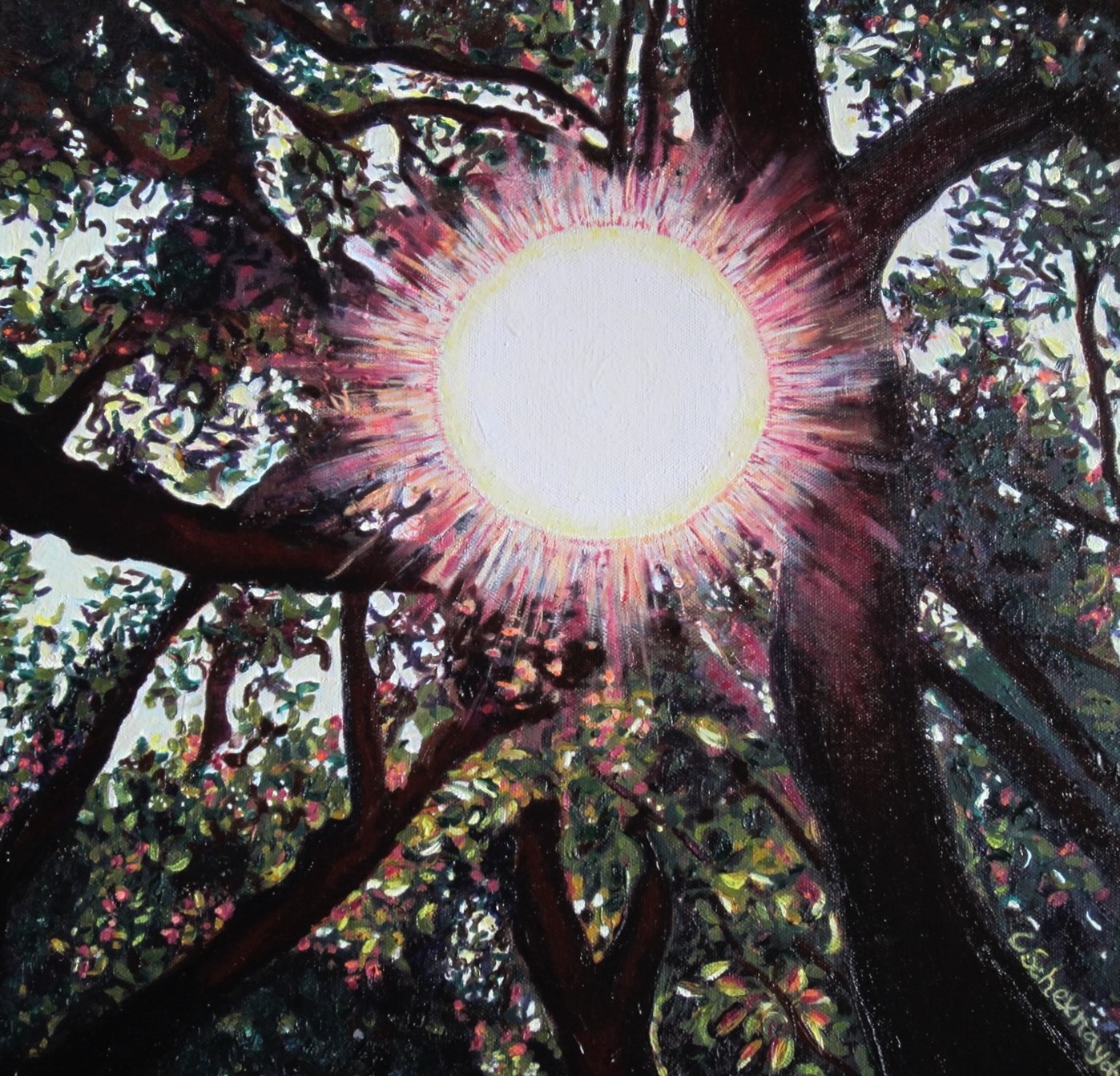
“Seeing the Light,” oil painting created after moving into my house after the second rebuild (Hurricane Katrina and Chinese Drywall renovations).
I worked juggling many hats and job descriptions as art therapist. I never deviated from my vocation but have worked in all kinds of settings, often holding several jobs simultaneously. These included as an art therapist at a private psychiatric hospital, a children’s grief program facilitator, private practice, national lecturer, traveling art therapist, and eventually a yoga teacher incorporating art therapy. I worked with varying populations, including trauma survivors, geriatric, child and adolescent, eating disorders, addictions, depression, anxiety and more. My other calling as a mother to Grace also taught me a lot about fortitude, perseverance and never, ever giving up. She learned to walk with a walker at four, but her ability to express herself at age two, dictating creative stories and poems and writing about her experiences as a person with a disability, would lead her into avenues I could have never imagined. Her gift as a writer has found her a graduate of an acclaimed creative arts conservatory and now a sophomore in college, pursuing writing. She amazes me everyday and we both teach each other about resilience.
Faith in the future I cannot see
While my life is an unusual story, I believe we all have stories that prepare us in some way to be resilient and to choose to continue marching forward because out of this chaos will come some pearl. It is usually in looking back that we respect the gifts that may have come through adversity. Wisdom is not always readily apparent in the present but I believe through persistence, creativity and staying present in the now that we can all be led to some greater moment of resilience. I encourage all art therapists to reflect on the journey of their career and all the twists, turns and obstacles that have arisen along the way. All that life throws at you while pursuing an occupation that is often misunderstood and requires persistence and patience to explain repeatedly builds resilience. Art therapy is so often misunderstood. I have heard all kinds of comments throughout my career that miss the clinical aspect of the profession. For example, people may assume that I provide therapy for artists or comment that creating art all day sounds like “fun,” when in reality the work laid bare for my witness often reveals a story of pain and trauma. I have perfected my response after 30 years and humbly reply that witnessing and holding space for emotions that have no words, offering tools for the unspeakable and creatively honoring the depth of the human soul and psyche are skills I practice and hone everyday as an art therapist. Our own life’s story aids us in our connection to empathy and pure unflinching witness of other human beings as well as ourselves.
My mantra throughout these COVID-19 times is to practice some form of meditation or prayer, movement or exercise and creativity daily. I believe that any form of these three things keeps us in the moment and allows us to be intimate friends with ourselves and our own hearts. This in turn keeps us primed and ready to continue to be healers and better humans for our families and loved ones while still allowing room for impatience, anger and frustration. Courage is not the absence of fear but rather the willingness to move through it. Resilience is the willingness to do this every day, even when we do not see light but we believe it exists. My personal affirmation: “I have faith in the future I cannot see.”
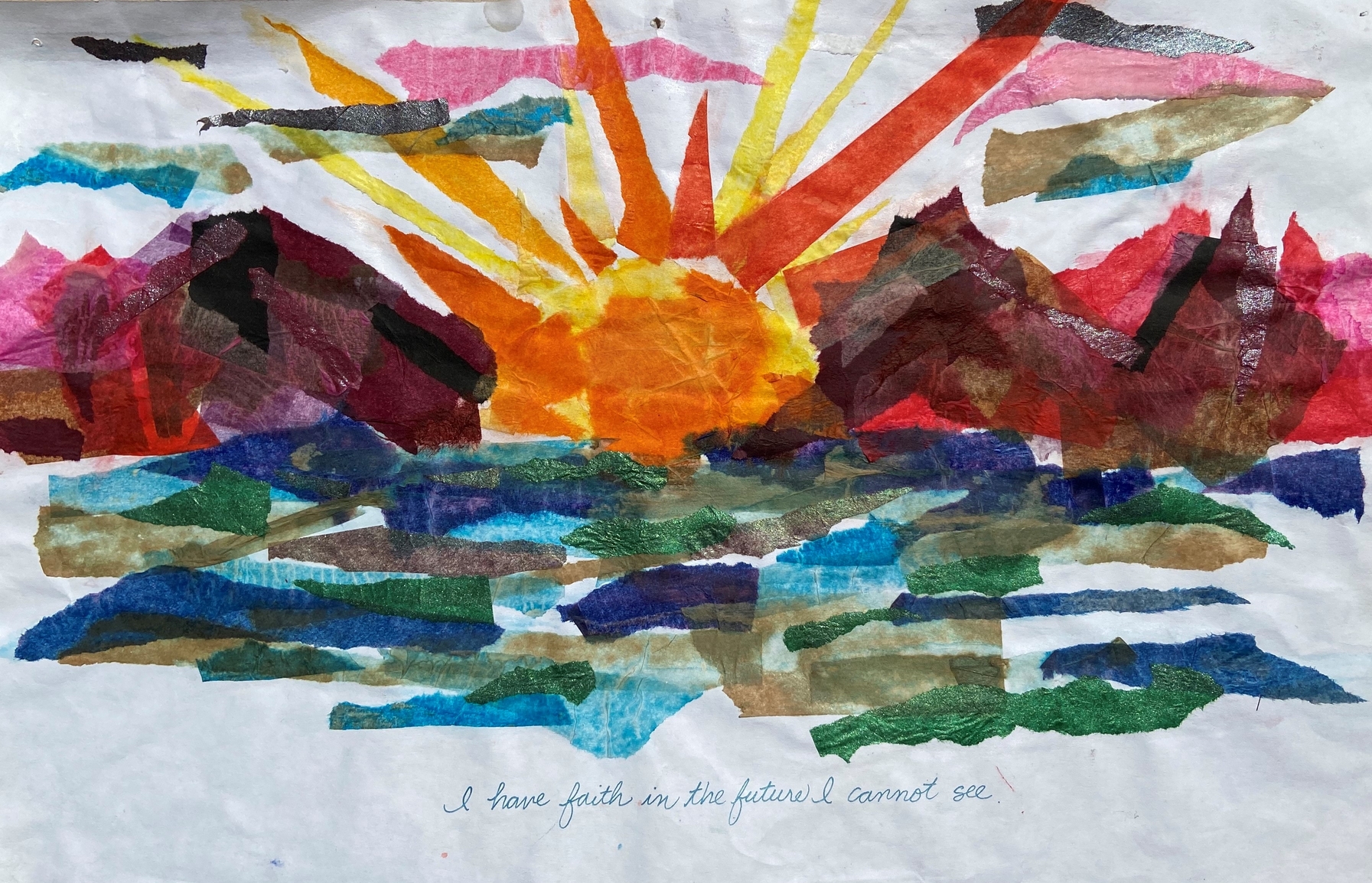
“I have faith in the future I cannot see.”
Celeste Schexnaydre BFA, MA, ATR-BC
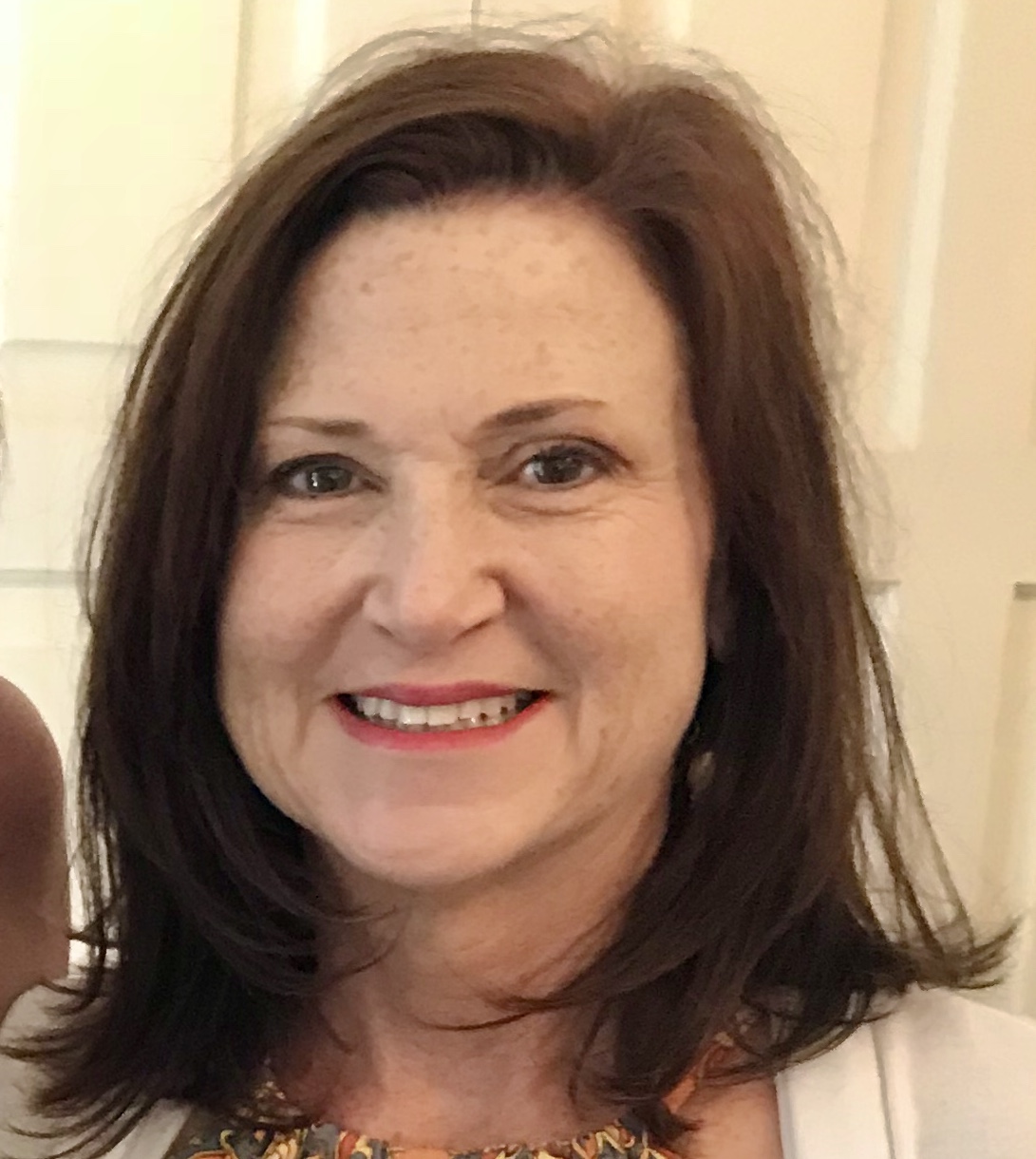 Celeste is an art therapist and artist who lives in New Orleans LA. She received a Bachelor of Fine Arts in Painting and Drawing from Louisiana State University and a Masters in Art Therapy from California State University, Los Angeles. She has worked as an art therapist for 30 years, specializing in the treatment of trauma, eating disorders, addiction and grief. She believes whole-heartedly in the powerful healing of art to express emotion, reconcile conflicts and to offer comfort and nurturance.
Celeste is an art therapist and artist who lives in New Orleans LA. She received a Bachelor of Fine Arts in Painting and Drawing from Louisiana State University and a Masters in Art Therapy from California State University, Los Angeles. She has worked as an art therapist for 30 years, specializing in the treatment of trauma, eating disorders, addiction and grief. She believes whole-heartedly in the powerful healing of art to express emotion, reconcile conflicts and to offer comfort and nurturance.
Celeste has worked with various psychiatric and behavioral health settings as well as lectured nationally on the topics of Trauma and art therapy. She is currently in private practice as an art therapist in Metairie, LA. Celeste’s artwork explores nature, trees and botanical life as symbols of the self. She loves to paint in watercolors and oils, and art therapy has expanded her desire to dig into textures, patterns, clay, glass, tile, beads and anything that looks intriguing and inviting.
